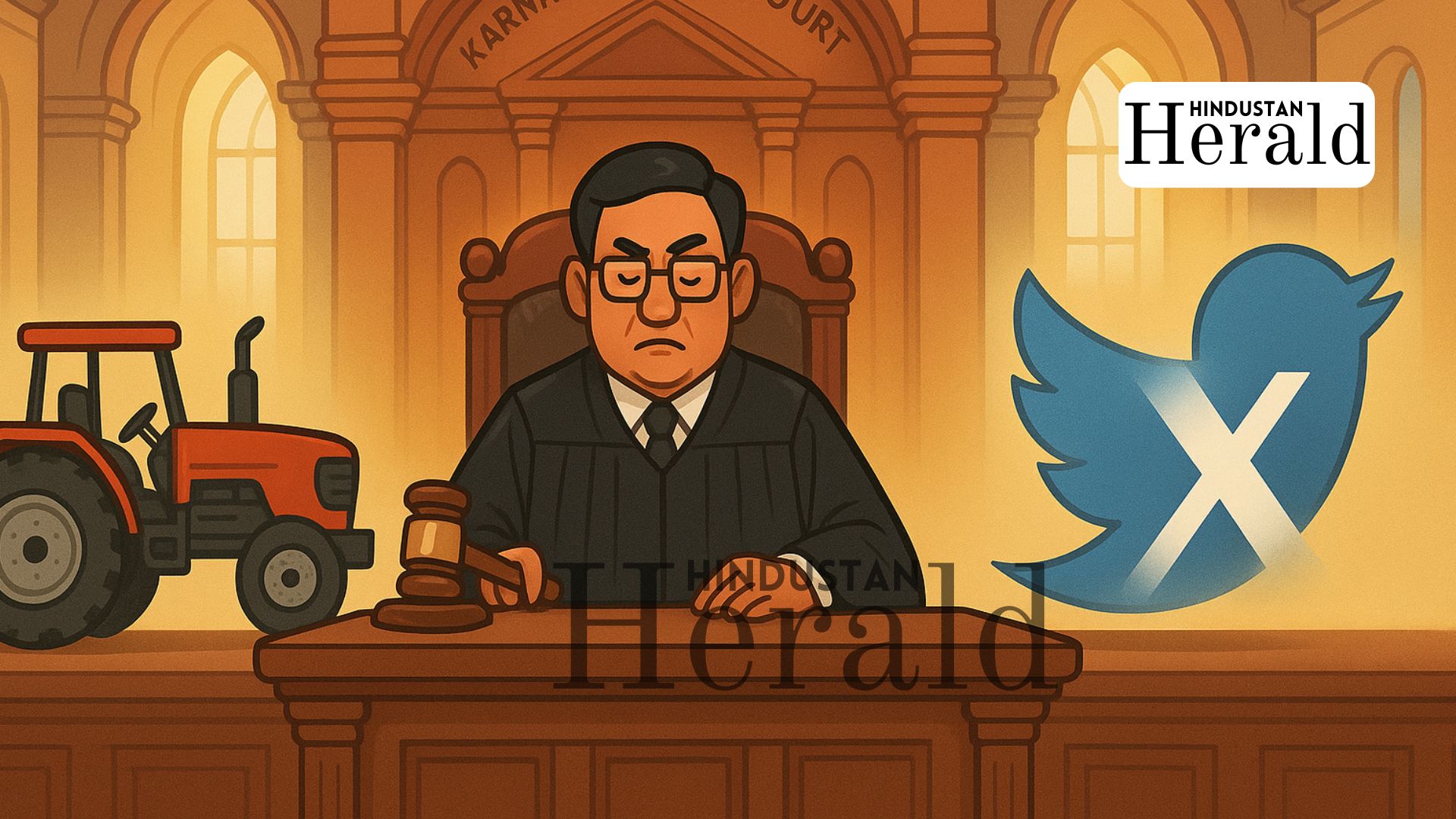Bengaluru, October 13: The Karnataka High Court has had an unusually lively few weeks. On one end, it’s been settling decade-old insurance disputes; on the other, it’s nudging governments, tech giants, and temple authorities toward greater accountability. What’s striking isn’t the variety of cases, but the steady tone: a court quietly reminding everyone from bureaucrats to billion-dollar platforms that responsibility doesn’t come with loopholes.
When a Trailer Became a Legal Vehicle
It started with an accident most people had long forgotten. Back in 2014, a trailer unhitched from a tractor in Mandya and rolled into a man walking by, killing him instantly. The victim’s family sought compensation, but the insurance company refused to pay, arguing the trailer couldn’t be treated as a vehicle since it wasn’t self-propelled.
The High Court disagreed. Calling the argument “hyper-technical,” the judges ruled that a trailer, though towed, is still covered under motor insurance. They ordered the National Insurance Company to pay ₹11.93 lakh plus 6% interest to the family.
It’s a small case, but a telling one. Insurers often rely on fine print to limit payouts. This ruling shuts one such escape route, putting the focus back where it belongs, on human loss, not legal grammar.
An Engineer, an Illegal Building, and a Long Wait for Justice
Another ruling that caught attention came from Bengaluru’s civic corridors. C. Geetha, a former BBMP engineer, had been pulled up for not acting against an illegal building in Lingarajapuram. The government accused her of negligence; she said she had no clearance or funds to demolish it.
The High Court sided with her. It noted that without financial sanction or written permission, she couldn’t have taken any action. The disciplinary order against her was scrapped.
For many government employees, this verdict hits home. It’s common for those at the bottom of the ladder to take the fall for delays or inaction higher up. The court, in this case, reminded departments that accountability flows both ways and that power and responsibility cannot be separated to suit convenience.
A Fort Left to Crumble
From city paperwork, the court turned to history. A public petition about the Kempegowda Fort in Magadi, built by Bengaluru’s founder himself, complained that the structure was falling apart, its moat filled with garbage and encroachments.
The bench didn’t mince words. It issued notices to the State Government and the Archaeological Survey of India, asking them to explain why such a heritage monument was being left to decay. The next hearing is set for February 2026.
This isn’t just a heritage issue. It’s a reflection of how quickly modern Bengaluru has moved on from its roots. The court’s intervention, modest as it seems, forces the government to pause and remember that growth without memory is just sprawl.
X Versus the State: Free Speech on Trial
In a case that made headlines far beyond Karnataka, the High Court upheld the government’s Sahyog Portal, a digital platform that allows authorities to order content removals under the IT Rules, 2021.
X (formerly Twitter) had challenged the rules, saying they give the government too much power and threaten free expression. But the court dismissed the plea, calling the portal “an instrument of public good.” It said social media companies must comply with lawful orders and can’t decide unilaterally what stays online.
For India’s tech landscape, the judgment is significant. It sets a clear line: digital platforms may facilitate speech, but they don’t define its limits. X has said it will appeal, calling the ruling “deeply concerning.” The debate between free expression and state regulation, it seems, is far from over.
The Caste Survey Debate: Data Meets Dignity
The High Court also weighed in on Karnataka’s massive socio-educational survey a project aimed at collecting data on caste, income, and education levels across the State. Critics said it violated privacy and could be misused politically.
The court refused to stop it. It said participation must remain voluntary and all information confidential, but allowed the survey to continue. Soon after, another petition asked the State to introduce internal quotas for smaller Scheduled Caste and Scheduled Tribe subgroups, once the data is compiled. The court has sought a formal reply from the government.
The issue touches a raw nerve in Karnataka’s politics. For decades, reservation debates have been about who gets representation. Now, they’re shifting toward how that representation is shared within communities, and the High Court is right at the center of that shift.
The Dharmasthala Petition
Not all petitions this week were about policy. One from Dharmasthala, the famous temple town, has stirred quite a controversy. Four residents filed a plea seeking a probe into alleged irregularities involving temple officials, government officers, and certain online activists.
The court issued notices to the State Government, the Special Investigation Team, and the Enforcement Directorate. The details remain under wraps, but the petition’s mere admission has triggered speculation. In Karnataka, where faith, philanthropy, and power often intersect, even a court notice can send ripples.
Two Bail Orders, Two Very Different Moods
Two criminal matters this week showed how sharply the court can swing between compassion and firmness.
In one case, several fans of actor Darshan, accused of sending abusive messages to actress-politician Ramya, were granted bail. The court noted that their phones had already been seized, and custody was unnecessary.
In another, involving a 68-year-old man accused of gang-raping a minor, the same court denied bail. It called the alleged crime “ruthless” and said age was no excuse for violating a child’s trust.
Together, the two cases summed up the High Court’s approach: freedom when the law allows it, firmness when justice demands it.
A Court Quietly Redrawing Lines
Taken together, these rulings may not make national headlines. But they sketch a portrait of a judiciary that’s alert, pragmatic, and quietly shaping public life in Karnataka. Whether it’s a small-town accident, a social media dispute, or a centuries-old fort, the High Court’s message has been consistent power however big or small, it must answer for its choices.
And in a system where that accountability often comes too late or not at all, that might be the most hopeful thing the law has done all month.
Stay ahead with Hindustan Herald — bringing you trusted news, sharp analysis, and stories that matter across Politics, Business, Technology, Sports, Entertainment, Lifestyle, and more.
Connect with us on Facebook, Instagram, X (Twitter), LinkedIn, YouTube, and join our Telegram community @hindustanherald for real-time updates.
Covers Indian politics, governance, and policy developments with over a decade of experience in political reporting.






